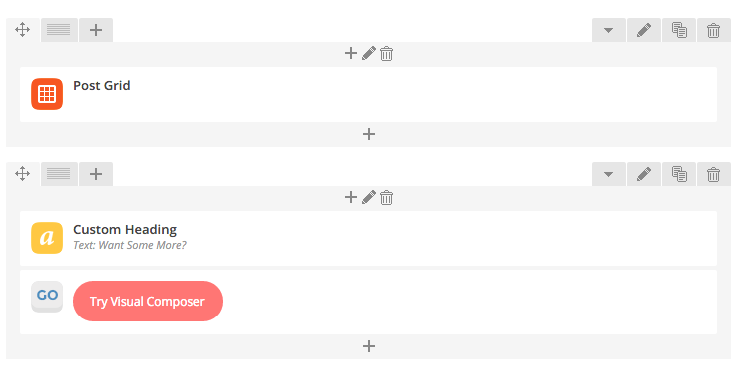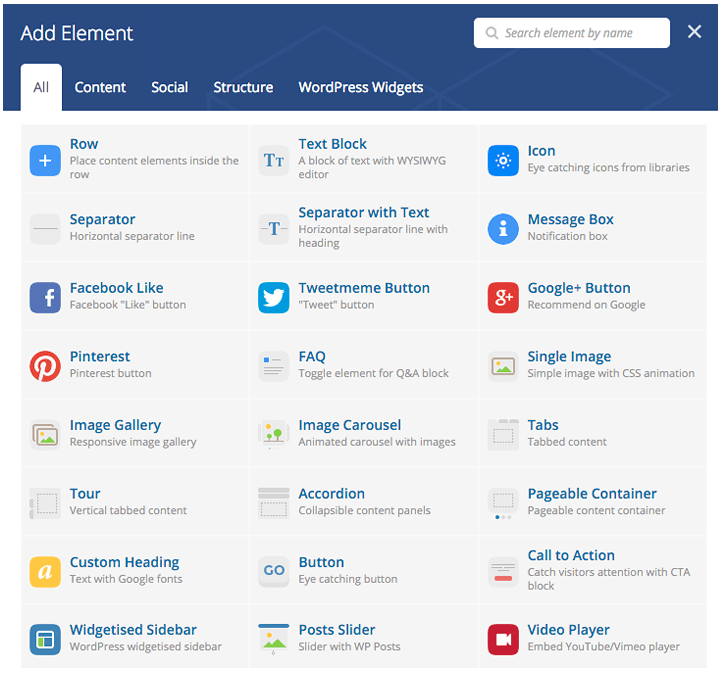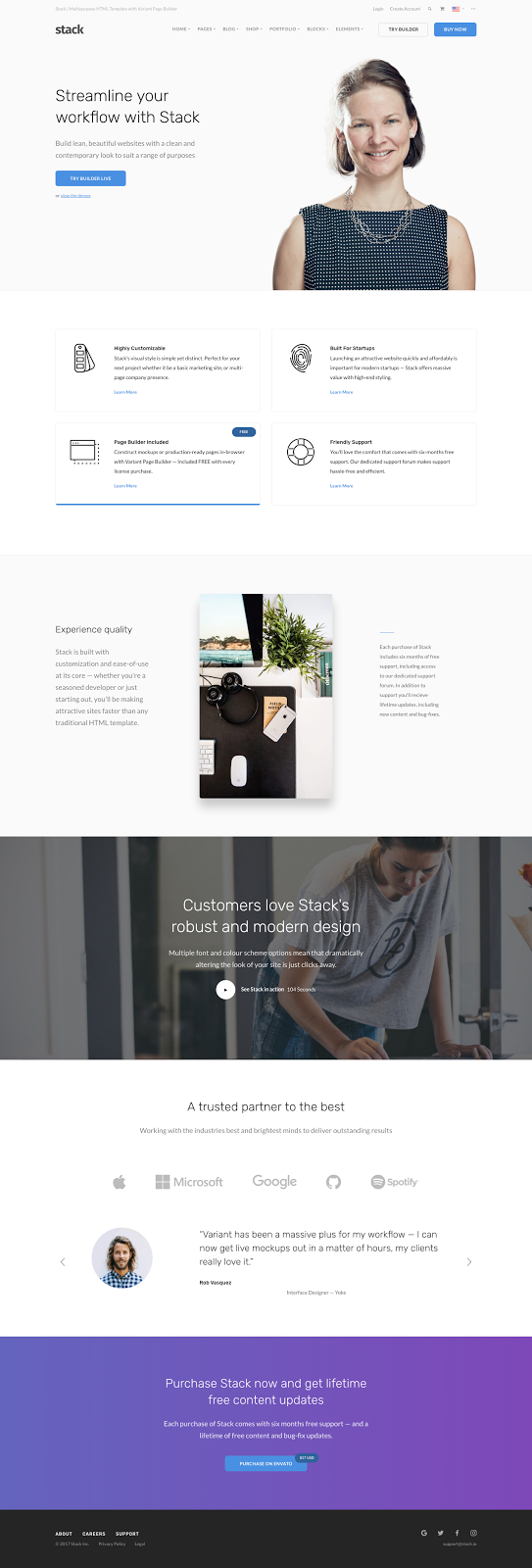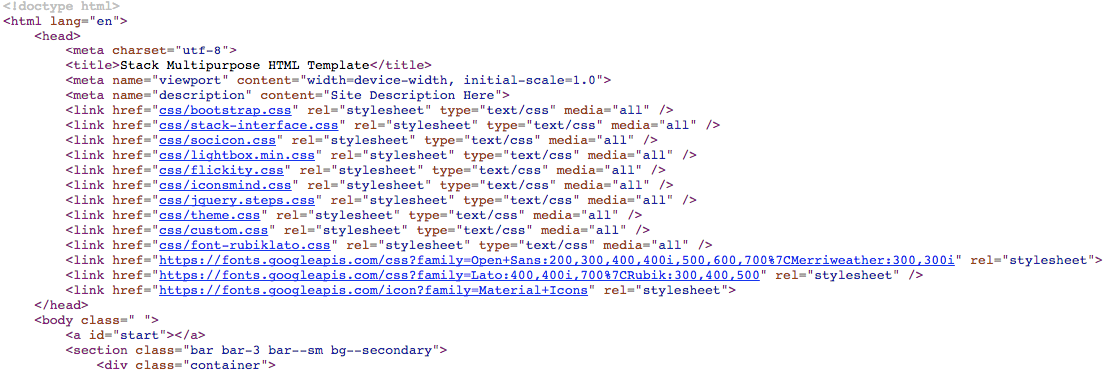
A landing page can be a very powerful tool to increase sales and drive traffic. Landing pages can be data-driven experiences; interactive campaign portals that funnel new leads to targeted experiences; or, location-based launch pads for custom user experiences. Whatever the landing page is designed to do, in order to ensure it’s optimized and as effective as possible, a lot has to go on behind the scenes during iteration. That can be several rounds A/B testing, goals for web analytics, and tweaks to the design based on UI feedback.
This requires the expertise of developers, designers, and marketing analysts to bring it all to life—something many businesses outsource to support their marketing efforts.
So how exactly does a landing page as a service business create amazing, interactive landing pages, and what mix of tools and people do they it need? In this series of articles, we’ll look at what goes into bringing different projects to life for different areas of IT and development to help you get the perspective you need to start planning and building out the IT aspects of your business.
The Example: Landing Page as a Service
Let’s break down the technical aspects of a live landing page. A very basic, bare bones landing page will usually be a mix of a static code (HTML, CSS, and JavaScript) that may include several strings of backend code, e.g. to send an email from a contact form on the front end. Without more specialized development skills, that’s the most you’ll get out of a landing page’s front end. While that might be enough for a “Coming Soon” or simple call-to-action (CTA) landing page, for more immersive experiences, it won’t accomplish much.
Some developers may use drag-and-drop page builders from famous content management systems like WordPress. These drag-and-drop builders are easy to use, offering flexibility and decent design output. A popular solution in this category is Visual Composer, shown below.
However, the reality is that this solution can often prove to run slowly on common, shared hosting platforms, and there’s more overhead as they provide too much in the way of non-useful tools and block types.
To solve this issue, you’ll need strong cache tools (like WP Super Cache), which can make making fast changes on the fly almost impossible. After each change to a system, you must rebuild a cache. If your landing page is complex, making changes in a fast backend textual mode can become difficult.
The second issue is with a solution like this is file size. The source code of a page can get overloaded by the special tags used with Visual Composer. Larger file sizes translate to slower runtimes.
Lastly, if you just need a landing page but that landing page solution has to integrate with a larger, existing Joomla! or WordPress backend with a lot of PHP files, a MySQL DB, wp-config files, etc., note that security could be a concern.
So, what’s the best solution to creating top-notch landing pages?
Enter: Static Page Generators as a Potential Software Business
Beyond drag-and-drop page builders is a custom static page generator tool. This tool gives users an admin panel to make changes to static content, powered by scripts that generate new static code. All the client needs to do is upload the new files to their hosting.
An excellent example of static page generator is Stack. This toolkit works on the BEM (Block Element Modifier) methodology and allows you to make robust and rock-solid landing pages with beautiful designs. Here’s a sample page you can create by yourself in around 2 minutes:
See a full demo here.
Stack is still a toolkit for developers, not a client-facing tool. You must ‘install’ Stack, generate static code, and then upload it to hosting. There’s certainly opportunity to create a Landing Page as a Service (LaaS) software—so how would you go about that?
While a landing page as a service is not a unique business idea and a number of companies already provide this service—Wix, Unbounce, Instapage, Ucraft, for example—good, strong competitors are a great field for inspiration, ideas and development. You can always make something better rather than reinvent the wheel. It’s rare for new technologies to be invented in IT, but innovating and iterating with existing ideas is excellent for furthering new and improved customer experiences.
Getting Started with Your MVP for a Landing Page Generator
Laying the groundwork for a new software project requires a few things: people, product, and infrastructure. In this section, we’ll cover the team you’ll need, app development specifics, and the backend infrastructure you’ll likely need to get it built. Even if you’re not creating a landing page generator specifically, this is a good general guide for software projects that require UI/UX design, graphic design, scripting, etc.
Let’s start with the user’s requirements:
1. Eye-catching design.
A common experience when using a LaaS is “not enough graphic elements!” Beautiful fonts, smart icon sets, a nice grid, and buttons, yes—but where should you get images for sliders, backgrounds, CTA elements, etc.? Should you hire a photographer for shooting stock photos of, say, watches?
Integrating a third-party photo stock service is a great solution. Shutterstock has its own API, making it possible to integrate with your new platform. Pexels has one too, and Depositphotos is also a mainstream option.
2. Fast load time.
Like we mentioned earlier, a self-hosted solution like Visual Composer for WordPress can’t provide you with a fast front-end due difficult technologies on backend. Follow the famous KISS principle and avoid overloaded landing page front ends. Fast page loads are very important for clients, clients of clients, and Google, too.
3. Clean code*
A static page generator is very good for keeping code clean because customers won’t have to mess with any back-end code; they only need to make adjustments within the administrative platform.
4. Easy to administer.
5. Has all the important tools in one place.
A landing page is an amazing tool for sales, but it’s not the best for SEO in that having several pages with a small amount of textual content isn’t best for on-site SEO. Also, say your client is trying to organize their offline conference in 2 months: a landing page won’t generate enough SEO in that timeframe, so clients will be looking for other sources of traffic.
Try adding that extra traffic source via an API like Google Adwords API or the Facebook API.
Building an MVP of a LaaS Software Project: Who to Hire
Some of the most important players—even just for the MVP stage—will be designers. The first impression your product will make is with its design aesthetics, so having several to perfect the look and feel (and usability) is important.
DevOps professionals will also be important, tailoring hosting solutions for client landing pages, connecting backend platforms with web servers, and implementing measures to improve security and page load speeds.
Also, you’ll need backend developers who are skilled with various APIs as your software’s architecture will likely utilize them to a degree: Google, Facebook, photo stock APIs, etc.
Project Workflow
| Milestone | Term | Owner |
| Project Specification | 2 – 3 weeks | Business Analyst |
| Project Development Plan | 1 week | Project Manager |
| Prototyping | 1.5 weeks | UI/UX specialist |
| Backend Development, Dashboard | 1.5 – 2 months | Backend developers |
| Webserver tune up | 1.5 – 2 months | DevOps |
| UI/UX frames and Dashboard | From 1 week to 1 month depend on difficult | UI/UX specialist |
| Design of elements and landing page | 3-4 months | Designers |
| Bug fixing | 1 month | QA engineers, backend, mobile developers, project manager |
Monetization
The usual model for monetization of a landing page as a service is to offer it free for a subdomain (user-landing.yourdomain.com) and paid for a domain (userdomain.com). You can also consider using a Freemium plan, or “tariff plans” that charge when usage rates increase.
One physical server with a 4 CPU-core, 8GB of RAM, and SSD drive can support up to 10 000+ virtual hosts (this was tested on an Nginx plus web server) and 1 million concurrent connections.
One good option can be to start from $10 as lower price point for a light, pay-per-month plan. And don’t forget about partnerships with providers like Facebook ads, Google Adwords, and photo stocks.
Get more work done, faster with freelance help. Post a job today and get started!




